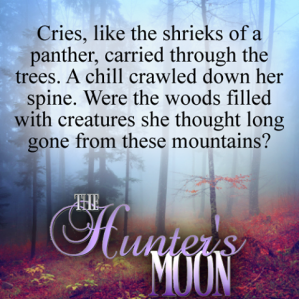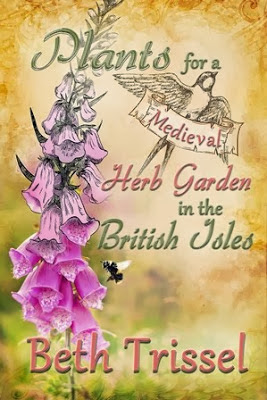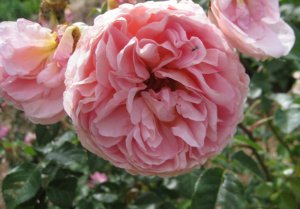 “Parsley seeds must go to the devil and back nine times before sprouting.” ~Old Folk saying that stems from the length of time it takes parsley seeds to sprout.
“Parsley seeds must go to the devil and back nine times before sprouting.” ~Old Folk saying that stems from the length of time it takes parsley seeds to sprout.
“An honest laborious Country-man, with good Bread, Salt and a little Parsley, will make a contented Meal with a roasted Onion.” ~ John Evelyn (1620-1706)
“A prudent Victorian English girl would not cut parsley, as that would make her unlucky in love, or give it away, as that would give away her luck in love.” ~ From http://www.motherearthliving.com/Mother-Earth-Living/HERBS-of-LOVE
 This year we have a thriving parsley plant (pictured alongside asparagus and black-eyed Susan and one close up image) and one that got buried under the dill and is not so content. The kind of parsley we favor is the flat-leafed Italian variety, best for cooking. From the Kitchen Dictionary: “There are more than 30 varieties of parley, but the most common are curly-leaf and the more pungent Italian or flat-leaf parsley. The flat-leaf has more flavor than curly parsley and is preferred for cooking, while dried parsley has little flavor at all. In ancient times parsley wreaths were used to ward off drunkenness. Chewing parsley will help with bad breath from food odors such as garlic”~
This year we have a thriving parsley plant (pictured alongside asparagus and black-eyed Susan and one close up image) and one that got buried under the dill and is not so content. The kind of parsley we favor is the flat-leafed Italian variety, best for cooking. From the Kitchen Dictionary: “There are more than 30 varieties of parley, but the most common are curly-leaf and the more pungent Italian or flat-leaf parsley. The flat-leaf has more flavor than curly parsley and is preferred for cooking, while dried parsley has little flavor at all. In ancient times parsley wreaths were used to ward off drunkenness. Chewing parsley will help with bad breath from food odors such as garlic”~
Read more: http://www.food.com/library/parsley-171#ixzz1RGqCyTOv
 Parsley has an interesting and ancient history of use and much lore surrounding it which I find fascinating. From my favorite source for antiquated herbal information: A Modern Herbal:
Parsley has an interesting and ancient history of use and much lore surrounding it which I find fascinating. From my favorite source for antiquated herbal information: A Modern Herbal:
“There is an old superstition against transplanting parsley plants. (*I had no idea just how old this superstition was, but am aware of it.) The herb is said to have been dedicated to Persephone and to funeral rites by the Greeks. It was afterwards consecrated to St. Peter in his character of successor to Charon.
In the sixteenth century, Parsley was known as A. hortense, but herbalists retained the official name petroselinum. Linnaeus in 1764 named it A. petroselinum, but it is now assigned to the genus Carum.
 The Greeks held Parsley in high esteem, crowning the victors with chaplets of Parsley at the Isthmian games, and making with it wreaths for adorning the tombs of their dead. The herb was never brought to table of old, being held sacred to oblivion and to the dead. It was reputed to have sprung from the blood of a Greek hero, Archemorus, the forerunner of death, and Homer relates that chariot horses were fed by warriors with the leaves. Greek gardens were often bordered with Parsley and Rue.
The Greeks held Parsley in high esteem, crowning the victors with chaplets of Parsley at the Isthmian games, and making with it wreaths for adorning the tombs of their dead. The herb was never brought to table of old, being held sacred to oblivion and to the dead. It was reputed to have sprung from the blood of a Greek hero, Archemorus, the forerunner of death, and Homer relates that chariot horses were fed by warriors with the leaves. Greek gardens were often bordered with Parsley and Rue.
 Several cultivated varieties exist, the principal being the common plain-leaved, the curled-leaved, the Hamburg or broadleaved and the celery-leaved. Of the variety crispum, or curled-leaved, there are no less than thirty-seven variations; the most valuable are those of a compact habit with close, perfectly curled leaves. The common sort bears close leaves, but is of a somewhat hardier nature than those of which the leaves are curled; the latter are, however, superior in every way. The variety crispum was grown in very early days, being even mentioned by Pliny.
Several cultivated varieties exist, the principal being the common plain-leaved, the curled-leaved, the Hamburg or broadleaved and the celery-leaved. Of the variety crispum, or curled-leaved, there are no less than thirty-seven variations; the most valuable are those of a compact habit with close, perfectly curled leaves. The common sort bears close leaves, but is of a somewhat hardier nature than those of which the leaves are curled; the latter are, however, superior in every way. The variety crispum was grown in very early days, being even mentioned by Pliny.
Turner says, ‘if parsley is thrown into fishponds it will heal the sick fishes therein.’
 The plain-leaved parsley was the first known in this country, (*she’s speaking of Great Britain) but it is not now much cultivated, the leaves being less attractive than those of the curled, of a less brilliant green, and coarser in flavour. It also has too close a resemblance to Fool’s Parsley (Anthriscus cynapium), a noxious weed of a poisonous nature infesting gardens and fields. The leaves of the latter, though similar, are, however, of a rather darker green and when bruised, emit an unpleasant odour, very different to that of Parsley. They are, also, more finely divided. When the two plants are in flower, they are easily distinguished, Anthriscus having three tiny, narrow, sharp-pointed leaflets hanging down under each little umbellule of the white umbel of flowers, whereas in the Garden Parsley there is usually only one leaflet under the main umbel, the leaflets or bracts at the base of the small umbellules only being short and as fine as hairs. Anthriscus leaves, also, are glossy beneath. Gerard called Anthriscus ‘Dog’s Parsley,’ and says ‘the whole plant is of a naughty smell.’ It contains a peculiar alkaloid called Cynapium.
The plain-leaved parsley was the first known in this country, (*she’s speaking of Great Britain) but it is not now much cultivated, the leaves being less attractive than those of the curled, of a less brilliant green, and coarser in flavour. It also has too close a resemblance to Fool’s Parsley (Anthriscus cynapium), a noxious weed of a poisonous nature infesting gardens and fields. The leaves of the latter, though similar, are, however, of a rather darker green and when bruised, emit an unpleasant odour, very different to that of Parsley. They are, also, more finely divided. When the two plants are in flower, they are easily distinguished, Anthriscus having three tiny, narrow, sharp-pointed leaflets hanging down under each little umbellule of the white umbel of flowers, whereas in the Garden Parsley there is usually only one leaflet under the main umbel, the leaflets or bracts at the base of the small umbellules only being short and as fine as hairs. Anthriscus leaves, also, are glossy beneath. Gerard called Anthriscus ‘Dog’s Parsley,’ and says ‘the whole plant is of a naughty smell.’ It contains a peculiar alkaloid called Cynapium.
Stone Parsley (Sison), or Breakstone, is an allied plant, growing in chalky districts. S. Amomum is a species well known in some parts of Britain, with cream-coloured flowers and aromatic seeds. The name is said to be derived from the Celtic sium (running stream), some of the species formerly included growing in moist localities.
Of our Garden Parsley (which he calls Parsele) Gerard says, ‘It is delightful to the taste and agreeable to the stomache,’ also ‘the roots or seeds boiled in ale and drank, cast foorth strong venome or poyson; but the seed is the strongest part of the herbe.’
 Though the medicinal virtues of Parsley are still fully recognized, in former times it was considered a remedy for more disorders than it is now used for. Its imagined quality of destroying poison, to which Gerard refers, was probably attributed to the plant from its remarkable power of overcoming strong scents, even the odour of garlic being rendered almost imperceptible when mingled with that of Parsley.
Though the medicinal virtues of Parsley are still fully recognized, in former times it was considered a remedy for more disorders than it is now used for. Its imagined quality of destroying poison, to which Gerard refers, was probably attributed to the plant from its remarkable power of overcoming strong scents, even the odour of garlic being rendered almost imperceptible when mingled with that of Parsley.
The plant is said to be fatal to small birds and a deadly poison to parrots, also very injurious to fowls, but hares and rabbits will come from a great distance to seek for it, so that it is scarcely possible to preserve it in gardens to which they have access. Sheep are also fond of it, and it is said to be a sovereign remedy to preserve them from footrot, provided it be given them in sufficient quantities.”~

























































Hey Beth! I’m convinced now—I’ll have to invest in growing some parsley. It’s usually the herb I DON’T buy. I love cilantro but never cared for parsley. However, my sister swears by it, and after reading all the folklore and uses for it, I’ll have to give it a try. Especially since I LOVE garlic!
LikeLike
I didn’t used to like it all that much either, but the flat-leafed Italian really is good. So I’m getting quite fond of it.
LikeLike